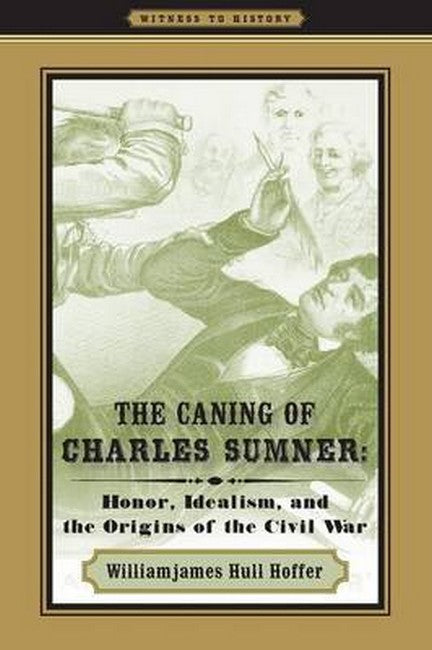A signal, violent event in the history of the United States Congress, the caning of Charles Sumner on the Senate floor embodied the complex North-South cultural divide of the mid-nineteenth century. Williamjames Hull Hoffer's vivid account of the brutal act demonstrates just how far the factions had drifted apart and explains why the coming war was so difficult to avoid. Sumner, a noted abolitionist and gifted speaker, was seated at his Senate desk on May 22, 1856, when Democratic Congressman Preston S. Brooks approached, pulled out a gutta-percha walking stick, and struck him on the head. Brooks continued to beat the stunned Sumner, forcing him to the ground and repeatedly striking him even as the cane shattered. He then pursued the bloodied, staggering Republican senator up the Senate aisle until Sumner collapsed at the feet of Congressman Edwin B. Morgan. Colleagues of the two intervened only after Brooks appeared intent on beating the unconscious Sumner, perhaps to death. Sumner's crime? Speaking passionately about the evils of slavery, which dishonored both the South and Brooks's relative, Senator Andrew P. Butler. Celebrated in the South for the act, Brooks was fined only three hundred dollars but died a year later of a throat infection. Sumner recovered and served out a distinguished Senate career until his death in 1873.Hoffer's narrative recounts the caning and its aftermath, explores the depths of the differences between free and slave states, and explains the working of the Southern honor culture as opposed to Yankee idealism. Hoffer helps us understand why Brooks would take such great offense at a political speech and why he chose a cane -- as opposed to dueling with pistols or swords -- to meet his obligation under the South's prevailing code of honor. He discusses why the punishment levied against Brooks was so minor, addresses the importance of the event in the national crisis, and shows why such actions are not quite as alien to today's politics as they might at first seem.

